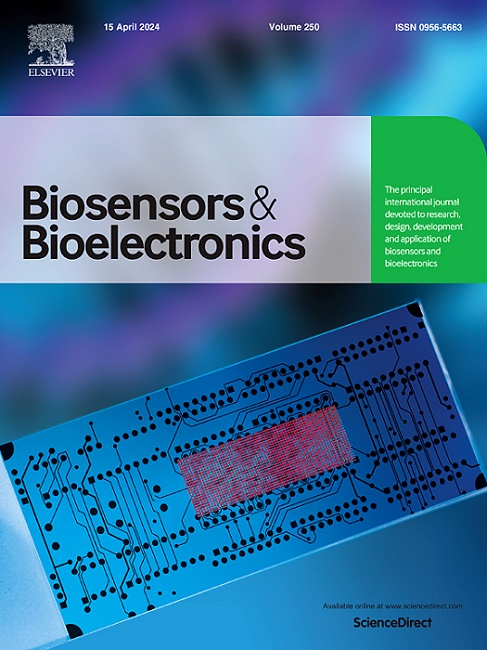Collaborative light-off and light-on bacterial luciferase biosensors: Innovative approach for rapid contaminant detection
IF 10.7
1区 生物学
Q1 BIOPHYSICS
引用次数: 0
Abstract
Bioluminescence-based light-off and light-on biosensors are widely used in environmental monitoring due to their rapid, cost-effective, real-time, and easy operation. However, stability and sensitivity issues in detecting real samples remain challenging. This study introduces a novel approach utilizing combined light-off and light-on biosensors for rapid and sensitive contaminants detection within 45 min in real samples. First, a recombinase-based state machine (RSM) was used to construct light-off RSM biosensors (light-off RSMs) for continuously strong light emission and overexpressing of outer membrane porins OmpC and OmpF enhanced their sensitivity to toxic contaminants. Additionally, a new experimental protocol containing the cell culture, collection, preparation, and the contaminant measurement was established for bioluminescent light-on whole-cell biosensors (light-on WCBs) in contaminant detection, initially developed using cadmium (Cd) and later applied to lead (Pb) and mercury (Hg). For Cd light-on WCBs, overexpressing OmpC and knocking out the contaminant exporter ZntA enhanced the accumulation of intracellular Cd in WCB cells, resulting in increased sensitivity to low concentrations of contaminants. Further, metabolic modifications in light-on WCBs significantly boosted luminescence. These genetic modified bacterial strains, whether freshly harvested or as freeze-dried powders, showed rapid luminescent responses to contaminants in the picomolar (pM) to nanomolar (nM) range within 45 min. Finally, the combined use of light-off RSMs and light-on WCBs successfully assessed toxicity and detected specific contaminants in real environmental and food samples. These strategies could be applied to developing other bacterial luciferase-based biosensors and even other types such as colorimetric biosensors.
求助全文
约1分钟内获得全文
求助全文
来源期刊

Biosensors and Bioelectronics
工程技术-电化学
CiteScore
20.80
自引率
7.10%
发文量
1006
审稿时长
29 days
期刊介绍:
Biosensors & Bioelectronics, along with its open access companion journal Biosensors & Bioelectronics: X, is the leading international publication in the field of biosensors and bioelectronics. It covers research, design, development, and application of biosensors, which are analytical devices incorporating biological materials with physicochemical transducers. These devices, including sensors, DNA chips, electronic noses, and lab-on-a-chip, produce digital signals proportional to specific analytes. Examples include immunosensors and enzyme-based biosensors, applied in various fields such as medicine, environmental monitoring, and food industry. The journal also focuses on molecular and supramolecular structures for enhancing device performance.
 求助内容:
求助内容: 应助结果提醒方式:
应助结果提醒方式:


